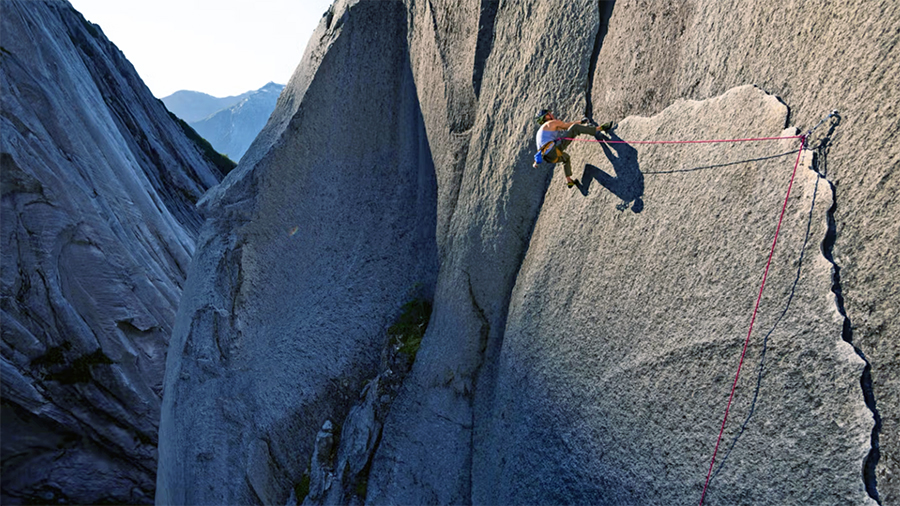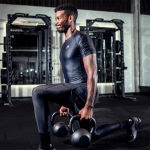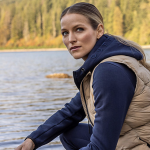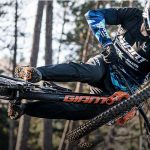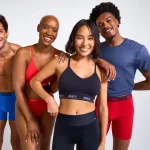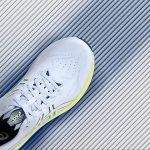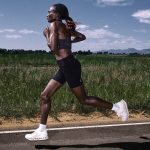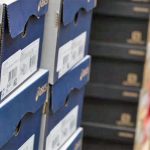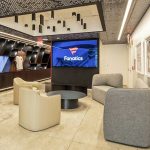Arc’teryx still claimed the trophy atop the Amer Sports mantle as the fastest-growing and largest brand in the company’s portfolio of active lifestyle brands, but the technical apparel, and now footwear, brand stumbled a bit in the fiscal first quarter – if you can call 28 percent growth a stumble.
But that could be argued for the most recent quarter after Amer’s Technical Apparel segment – of which Arc’teryx represents the vast majority, fell below the 30 percent growth trend line that has become the norm for the brand over the last two years.
Year-over-year (y/y) growth for the segment was tallied in the 33 percent to 34 percent from Q2 2024 through Q4 2024, but even that fell short of the 44 percent growth tallied by the segment in the prior-year Q1 period. By comparison, Q2 2023 saw 79 percent growth, Q3 2023 delivered 69 percent growth, and Q4 2023 came in below the 30 percent point at 26 percent growth.
To be fair, the segment did grow 28 percent on top of 44 percent in the year-ago comparative quarter.
But numbers such as these do not give Amer Sports CEO James Zheng pause. He’s just getting started.
Arc’teryx is a breakout growth story with great growth and profitability for the outdoor industry driven by its disruptive DTC model and unique competitive position. It is still very under-penetrated globally and still has a tremendous long-term growth opportunity,” Zheng argued in his prepared remarks on a Q1 earnings conference call with analysts on Wednesday, May 21.
“Although we are off to a great start in 2025, given macro uncertainty related to U.S. tariffs, we are operating our business with discipline and flexibility,” he said when discussing the overall Amer Sports business.
Technical Apparel revenues increased 28 percent to $664 million in Q1, led by the Arc’teryx brand. Growth was reportedly fueled by 31 percent direct-to-consumer (DTC) expansion, including 19 percent omni-comp growth.
Zheng said the 19 percent omni-comp growth was still a very good result as it cycled against a 36 percent omni-comp in the first quarter of last year.
“Arc’teryx DTC momentum continues to be fueled by both new and existing consumers across all regions, channels and product categories,” the CEO noted.
On the other side of distribution, Technical Apparel Wholesale revenues grew 22 percent, driven by Arc’teryx.
Although a small part of the Technical Apparel segment, company CFO Andrew Page said it was worth noting that the company is making good progress with its Peak Performance brand. He said they were “cleaning up the marketplace in EMEA and the Nordics, shifting it to more of a full-price and DTC oriented brand.”
Peak’s healthier core franchise is to be a solid base for new brand President Stefano Saccone, to lead the brand through the next phase of its journey.
Regionally, Technical Apparel growth was reportedly led by Asia Pacific, followed by Greater China, the Americas and EMEA. All regions reportedly grew strong double digits, fueled by Arc’teryx.
Technical Apparel seegment adjusted operating margin expanded 110 basis points y/y to 23.8 percent of revenue in the first quarter, driven by SG&A leverage thanks to strong growth.
But it was Brand King Arc’teryx that delivered another great quarter, with strong growth across all regions, channels, and categories — especially footwear and women’s, which continue to grow faster than the brand overall.
Direct-to-Consumer
Zheng said it was important to note the brand’s DTC growth was driven by strong performance in both stores and online.
“We believe Arc’teryx stores are very differentiated from both a product and experience perspective,” he added. “And they continue to be critical to the Arc’teryx growth strategy, especially how we engage with local consumers and community.”
Arc’teryx net new store openings were reportedly flat in Q1, as four new store openings were offset by the closure of four legacy locations as part of an ongoing strategy to optimize the quality and productivity of our store fleet.
Key new store locations in the first quarter include two stores in China, one in Georgetown (Washington, DC), as well as the new Chamonix location, which is the brand’s first mountain town store in Europe. Zheng said it has attracted great consumer interest since Day 1.
The Arc’teryx store expansion strategy includes of a mix of different formats ranging from multi-level large scale “Alpha Flagship stores” to small-format, very distinct, Mountain Town shops.
“For 2025, we plan to open approximately 25 net new Arc’teryx stores globally, which incorporates a similar level of gross openings as in 2024, partially offset by the closure of certain outlets and other sub-optimal locations,” the CEO outlined. “We are focused on positioning Arc’teryx for sustainable long-duration growth. And developing a high-quality store network is critical to our success, and much more important than chasing fast-paced new store expansion.”
Zheng said the Arc’teryx brand will have net store closures in China – including closing some legacy partner doors — but will grow the owned-store count by continuing to open larger format, high quality locations.
“We expect to grow revenue strong double digits, driven by comp-store growth and replacing small, less productive stores with large format high quality locations,” Zheng noted.
In Beijing, Arc’teryx will soon open a brand store within the Peninsula hotel, and the company has plans to open two more shops at other Peninsula locations later this year.
“We are very excited that Arc’teryx will be the first sports brand to sit alongside traditional luxury brands inside this iconic hotel chain,” the CEO said.
The company also recently opened another mountain town store in Banff and Zheng said it is a great addition to the small-but-growing portfolio of authentic mountain town locations, including Chamonix, Shangri-La, and Whistler.
Product Summary
The nascent Footwear business reportedly continued to be the Arc’teryx brand’s fastest growing category in Q1, as consumers continue to respond positively to the line.
“This spring we launched the Norvan LD4, an elevation of the popular silhouette made for long-distance mountain running,” the CEO shared. “We also launched the Vertex Speed, which is a mountain running shoe designed to climb through technical vertical terrain.”
Zheng said the company believes that footwear will become a sizeable and profitable growth avenue for Arc’teryx, both in owned-retail, e-commerce, and in certain Wholesale accounts over time.
“We have now structured footwear as a separate business unit with a dedicated P&L and team focused on the category,” he noted.
Zheng said the Women’s business also continued its great momentum in Q1, with double-digit growth across all regions and channels, outperforming the rest of the brand in every region.
“We see a big opportunity to serve women in the outdoors differently through pinnacle design and performance,” he explained. “A great example of our design focus on women’s is the Clarkia pant, which has seen explosive growth in Q1, stocking out quickly. We are seeing rising brand awareness and affinity with women in the U.S. and Europe as we’ve improved fit, style, and function.”
ReBird also continues to be one of the company’s priority strategies. Arc’teryx launched ReBird in May 2021, connecting consumers to its ongoing initiative in circularity, including upcycling, resale, care, and repair.
ReBird marks the company’s commitment to shift from a take-make-waste ethos by adopting and evolving a circular way of operating. It also contributes to the brand’s science-based targets to reduce greenhouse gas emissions by 65 percent by 2030.
“Our products are long-lived and built for repair,” he said. “We experience especially strong consumer engagement in all of our locations with a ReBird center.>
At the end of Q1, Arc’teryx had 25 ReBird service centers globally.
“Lastly onto Veilance, which we view as the city expression of Arc’teryx,” Zheng shared. “Like footwear, Veilance also now has its own P&L and management team. Our new Veilance leadership is sharply focused on developing the best product, merchandising, marketing, and go-to market strategies to drive Veilance’s long-term growth opportunity.”
The CEO noted that, for the first time, Veilance was present at Fashion Week in Paris, where the brand was positioned alongside luxury players, and reportedly received very positive feedback from buyers, industry, and media.
Segment Outlook
For full-year 2025, the company expects Technical Apparel segment revenue to increase in the range of 20 percent to 22 percent. Segment operating margin is expected at approximately 21 percent.
Amer Sports Inc. posted record financial results for Q1 2025, which led the company to raise its full-year 2025 guidance.
Image courtesy Arc’teryx
***
See below for additional SGB Executive coverage of Amer Sports and details for each brand and segment.
EXEC: Amer Sports C-Suite Details Small Tariff Impact and FY Guidance Bump
EXEC: Salomon Footwear Continues to Boost the Brand and Parent Amer Sports
EXEC: Wilson Ball & Racquet Segment Continues DD Growth for Amer Sports

